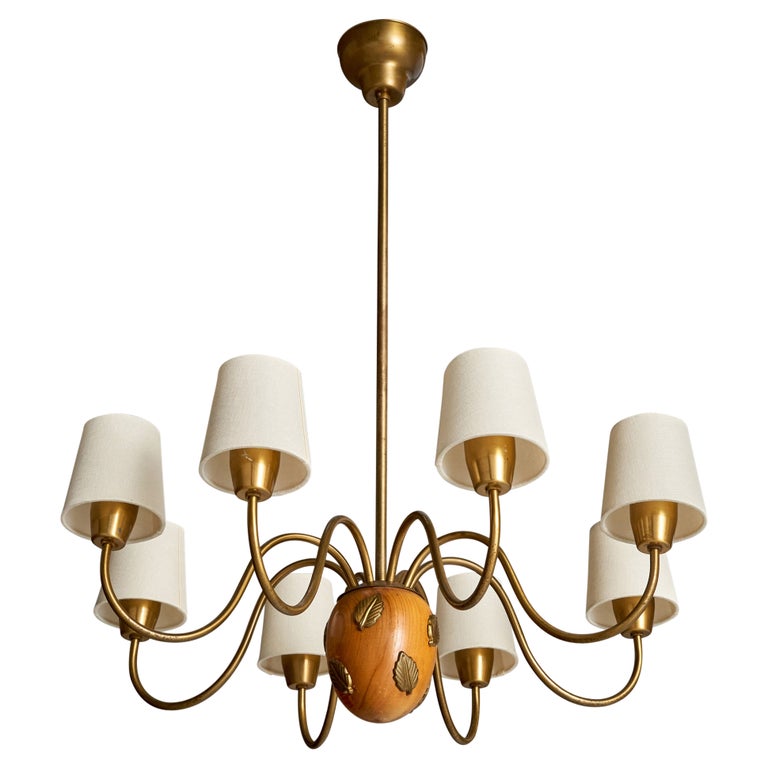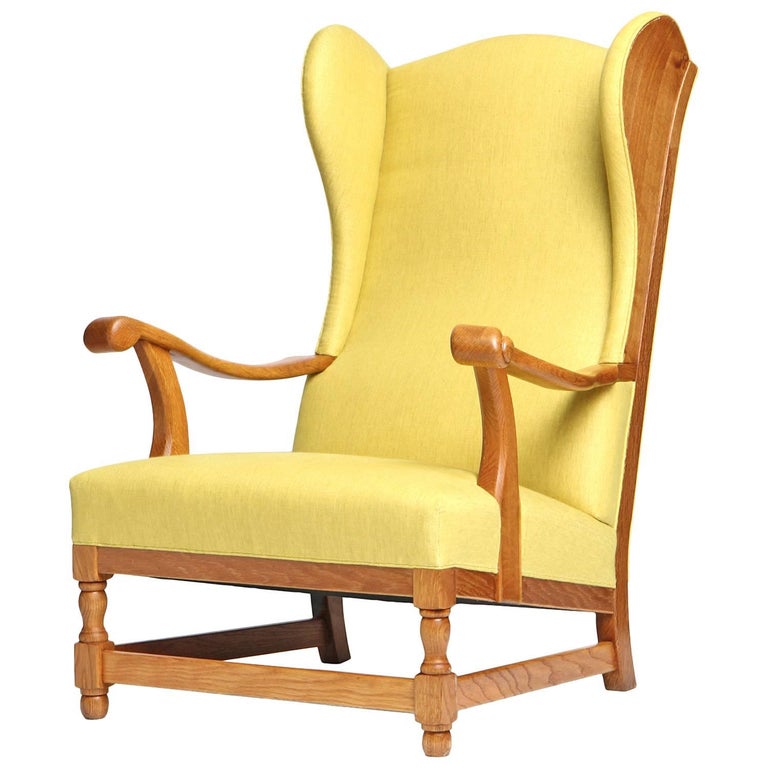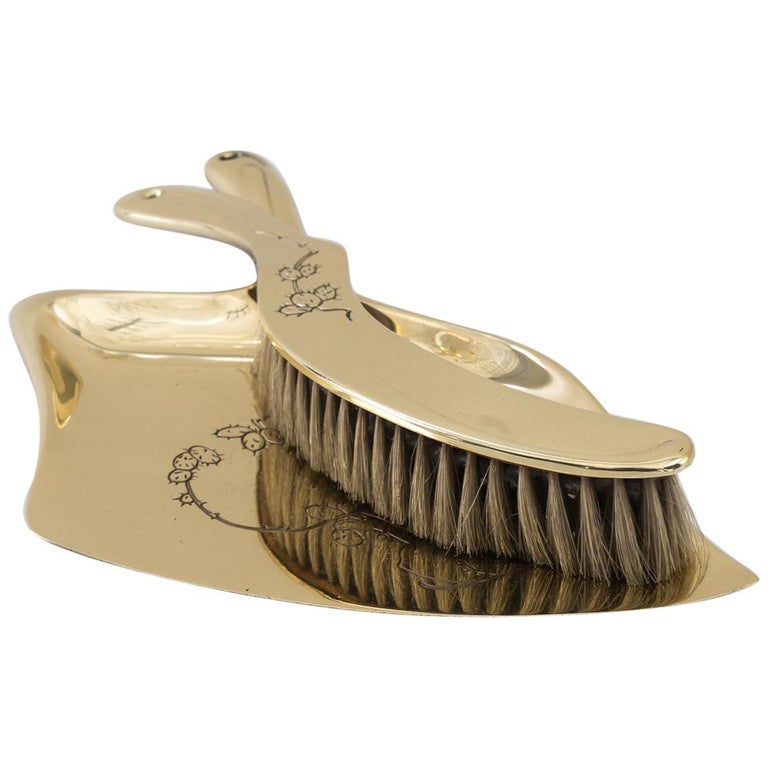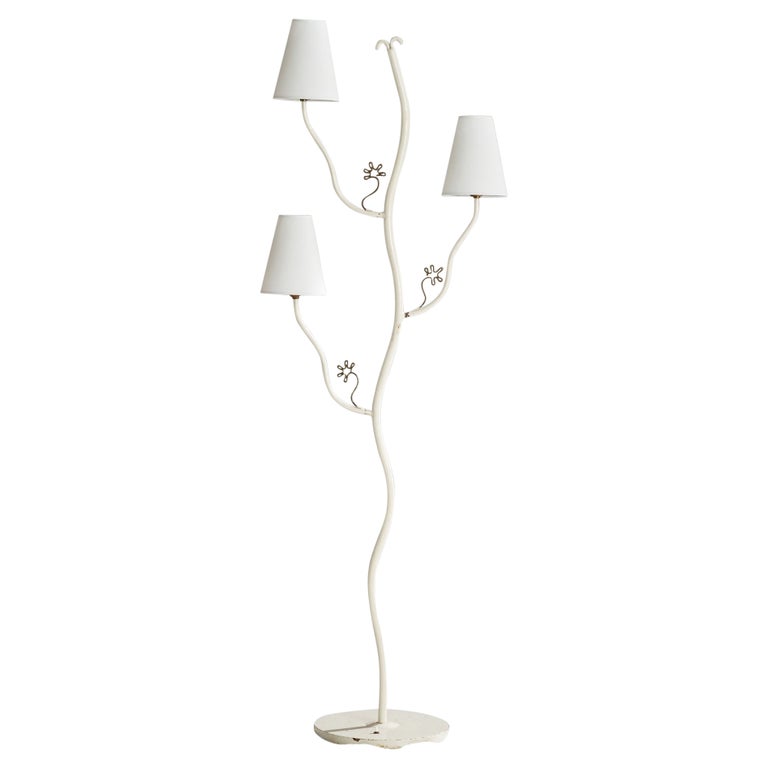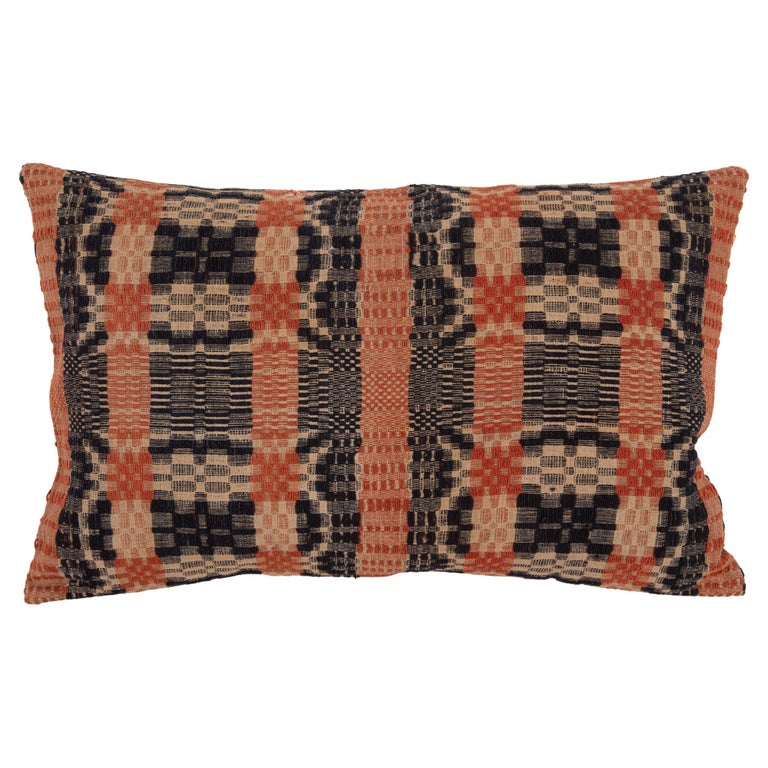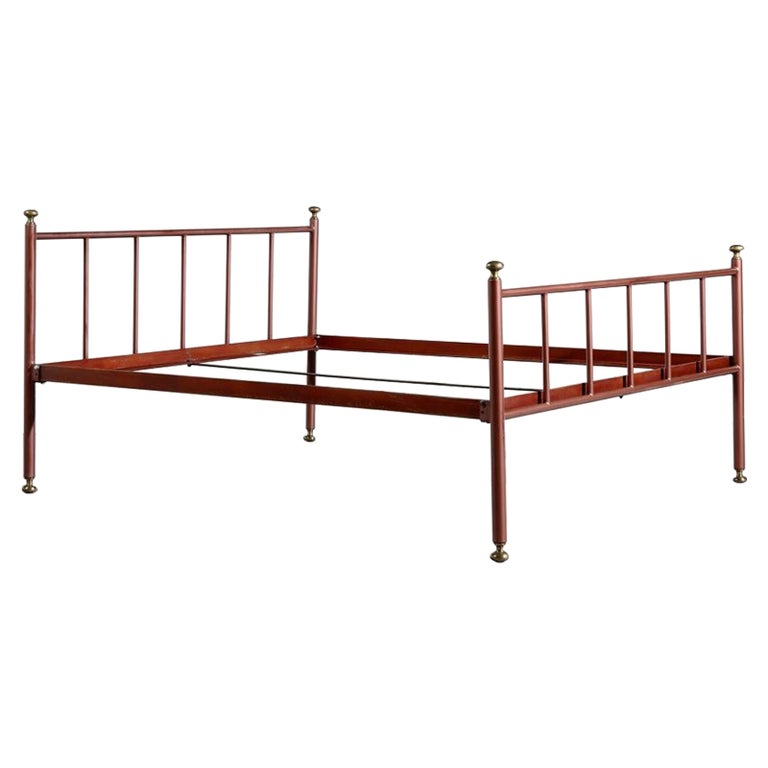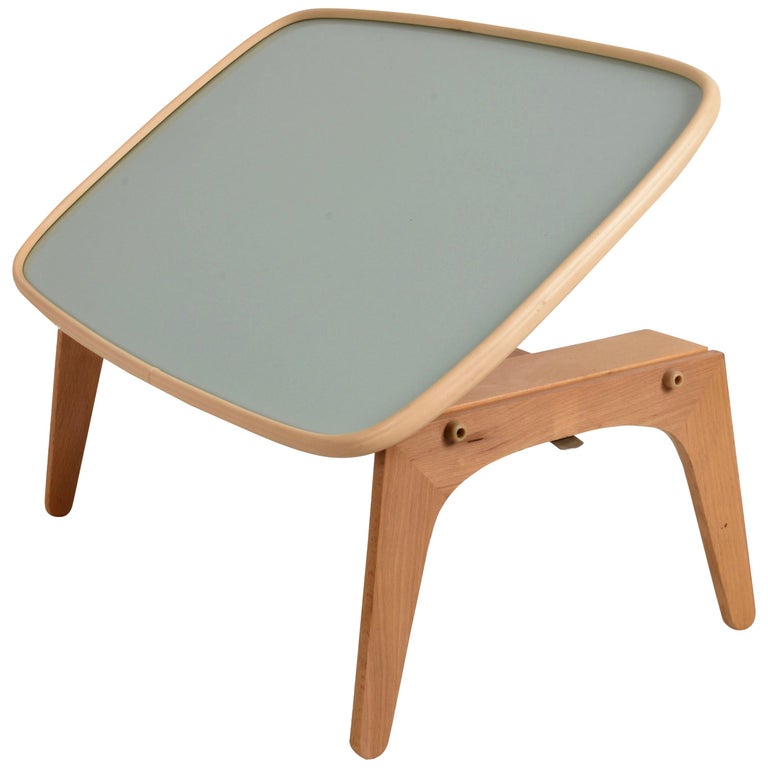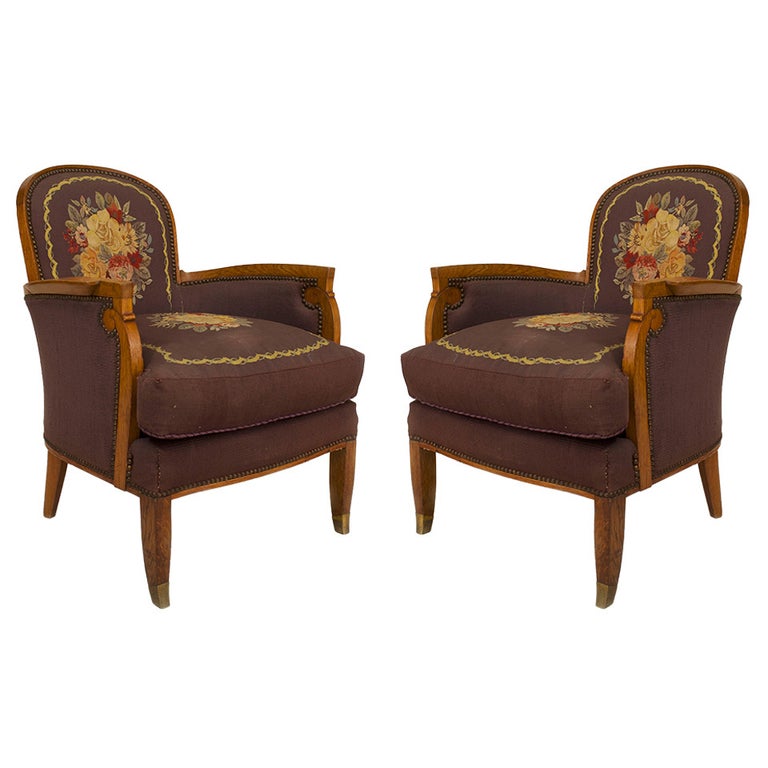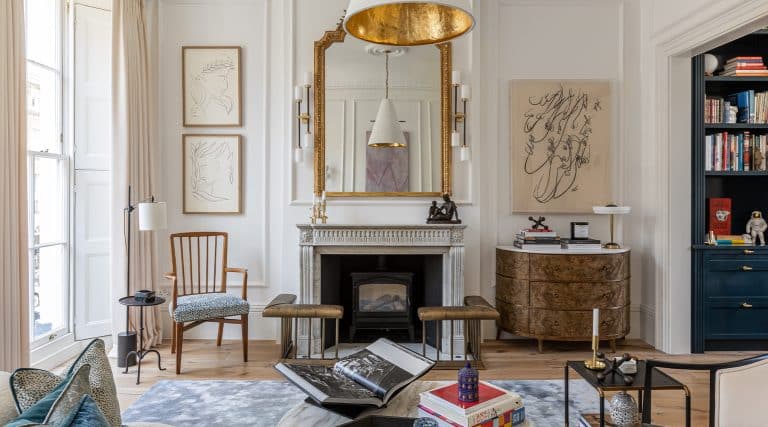March 2, 2025Frances Merrill believes that successful homes tell the stories of their residents with high style and casual grace. “You shouldn’t have to put everything away for a house to look good. You should be able to live surrounded by the things you love,” says the Los Angeles designer, known for creating charmingly idiosyncratic interiors. “And if your beloved aunt gave you a hideous bowl, you should be able to make room for that, too.”

Since founding Reath Design — in 2009, using her maiden name— Merrill has built an ardent following for her artful mixing of antique, vintage and contemporary furnishings. In her interiors, 18th- and 19th-century European case goods may be found blending in seamless visual harmony with mid-century Viennese and Scandinavian lighting, in addition to Shaker chairs and the imaginings of contemporary L.A. designers like Nickey-Kehoe and Brendan Ravenhill.
Like a latter-day Dorothy Draper, Merrill employs a bold-yet-sophisticated spin of the color wheel, selecting sumptuous fabrics, patterned rugs, custom lampshades and floral wallpapers to complement furniture in rooms that are as comfortable as they are striking.
“We test and balance color and consider every piece of furniture to a psychotic level,” the designer says, laughing.
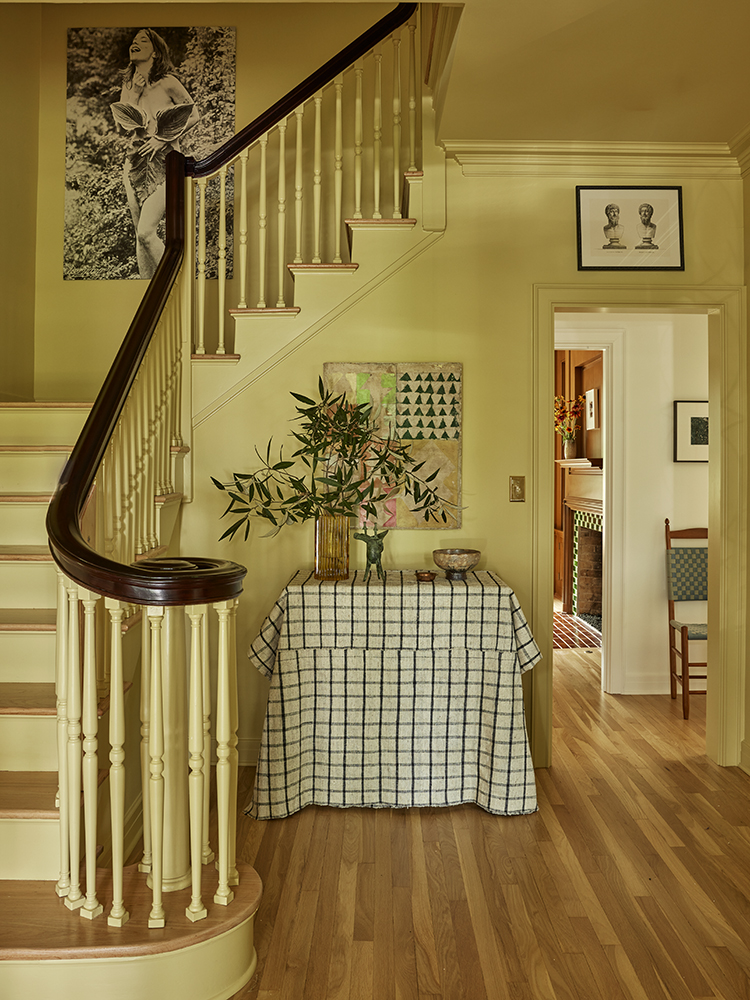
A recently completed renovation of the entire lower level and upstairs primary suite of a 7,000-square-foot, 1946 colonial in Portland, Oregon, demonstrates Merrill’s wide-ranging influences. A classic film buff whose husband works at the American Film Institute, she took design inspiration from movies dating back to the golden age of Hollywood — the Thin Man series, My Man Godfrey and Mr. Blandings Builds His Dream House, the 1948 Cary Grant comedy about aspirational nesting — along with the designs of pioneering French modernist Robert Mallet-Stevens.
“The clients are a young and fun couple with a great sense of humor and unconventional taste in art,” she says. They also have two young children and an impressive collection of ceramics ranging from Tang dynasty vessels to modernist studio pottery by Lucie Rie and Betty Woodman to contemporary works by Jun Kaneko and Sam Chung.
“Colonial is really not their taste, so they wanted it to be a little tongue-in-cheek,” the designer adds. “And we also had to account for the weather and the light in Portland.
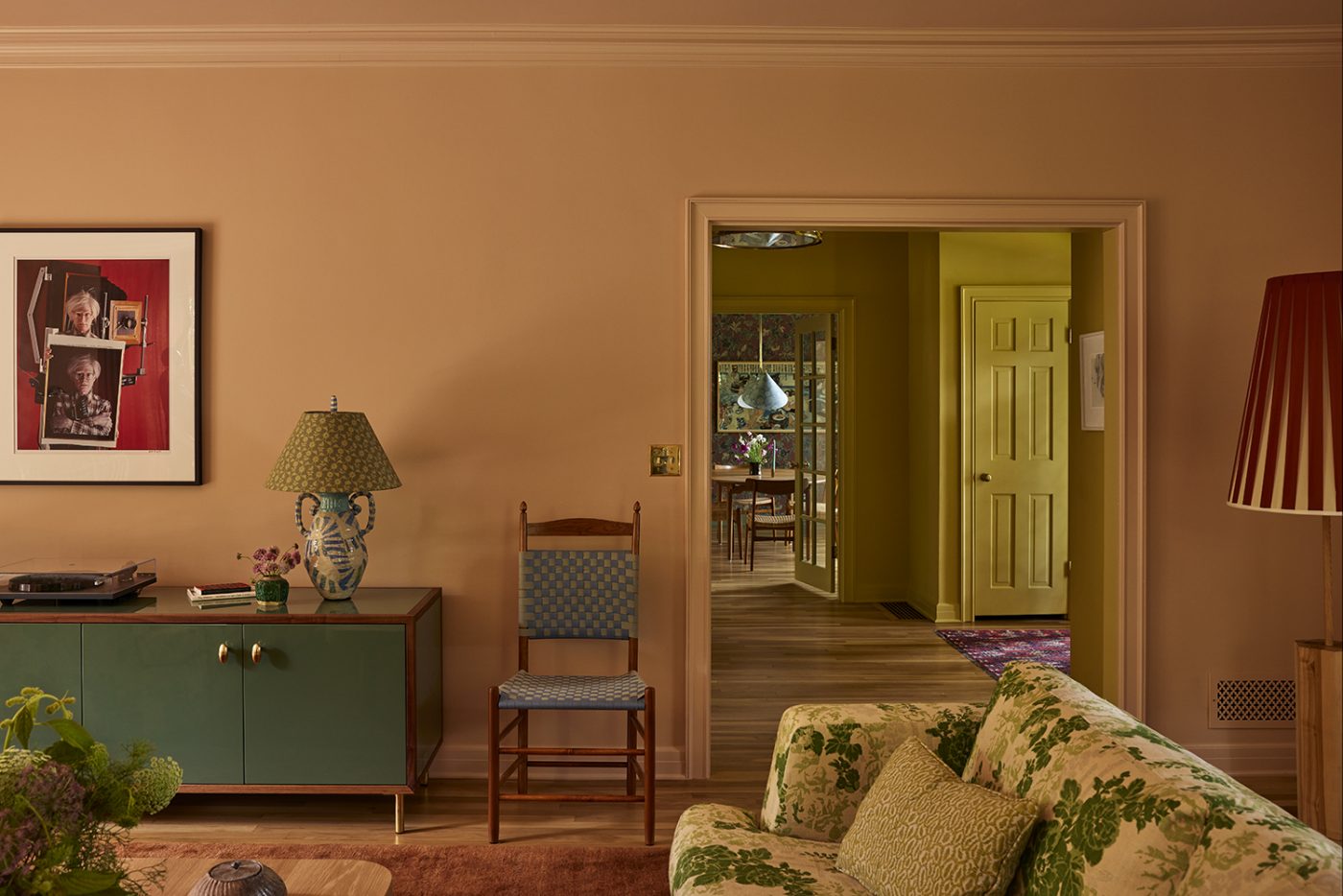
Accordingly, Merrill devised a color scheme that radiates cheerful warmth, even on the coldest, grayest days. “The clients,” she says, “never wanted me to make a site visit on a sunny day.”
In the front entry, guests are greeted by an envelope of buttercup yellow, plus a black-and-white poster of Icelandic pop star Björk on the stairway landing that, the designer says, “lets you know right away that this is not a fussy house.”
Bathed in a shade of paint that evokes sunset on sand — a calming transition from the hallway — the living room centers on a white-oak Nickey Kehoe coffee table flanked by a pair of custom sofas in a floral print reminiscent of early-20th-century designer Rose Cumming’s chintz fabrics.
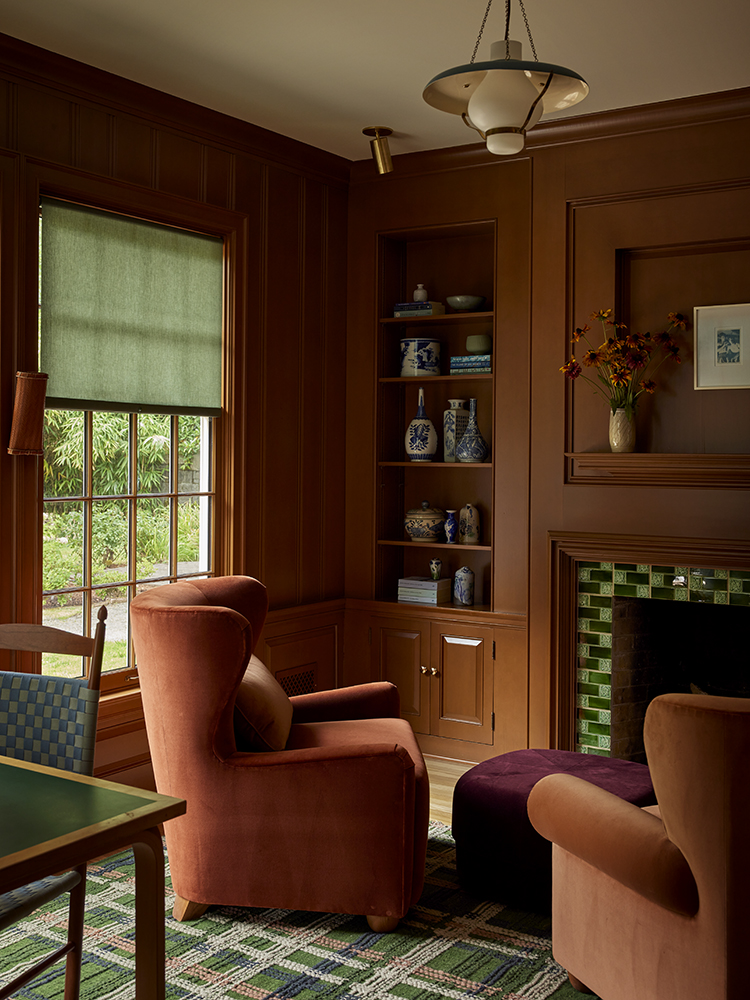
Ideally positioned in a corner between windows, a Teddy lounge chair and ottoman, a 1936 design by Viggo Boesen, with Pierre Frey covered cushions, offer a quiet place to read. For livelier times, a grand piano occupies a bay window, and a record player sits on a De La Espada sideboard, illuminated by an Abby Kasonik ceramic lamp sourced from 1stDibs.
The wood-paneled den intensifies the green-and-rust palette of the living room. Velvet wing chairs and a vintage card table by Rud Thygesen and Johnny Sørensen for Magnus Olesen — a 1stDibs find flanked by Shaker chairs — all sitting on a large-scale plaid Secret Garden rug by Temple Studio and illuminated by a vintage Swedish lantern, conjure a laid-back gentleman’s library.
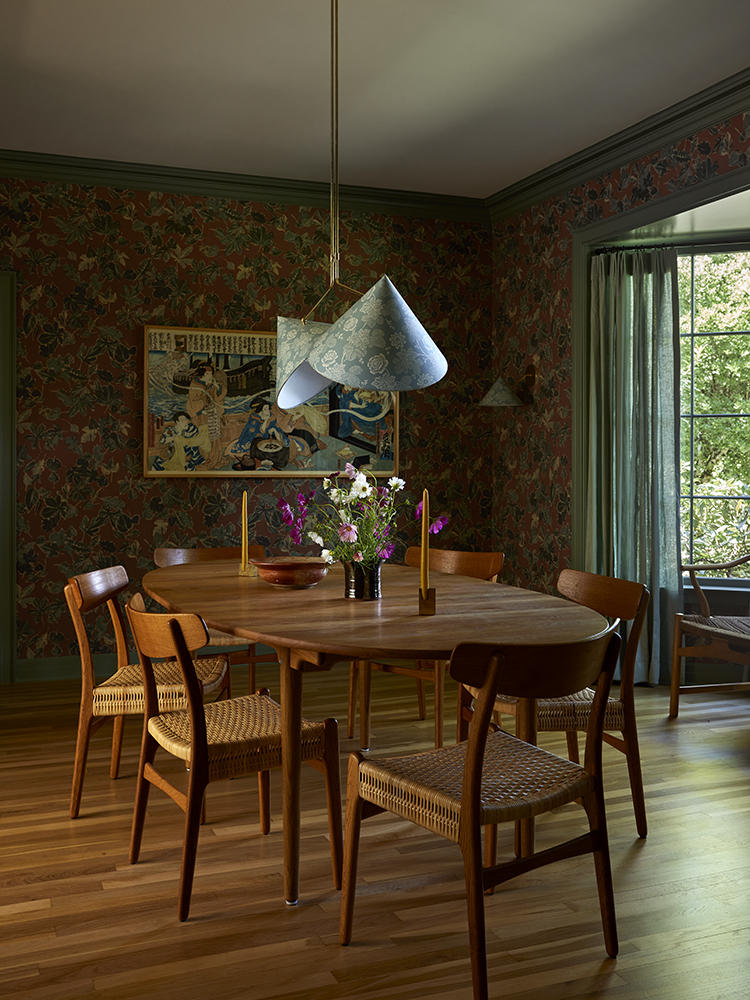
The owners’ prized mid-century Swedish table and cane-seated teak chairs provide a sense of informality in the dramatic dining room, papered in a botanical-print grasscloth by interior designer Josh Greene. To complement this decor, Merrill collaborated with lighting designer Ravenhill, installing his signature chandeliers and sconce outfitted with conical floral shades made from Claremont fabric.
“A traditional chandelier would’ve tipped things too far in an old-world direction,” she explains. “The shades added a decorative element to Brendan’s beautiful forms.”
On one wall, a work by Masami Teraoka offers a glimpse of the owners’ humor. “It subverts traditional Japanese art,” Merrill says, “You think it’s much older, but if you look closely, you can see modern-day elements, like condoms, that make you think, ‘What’s happening?’ ”
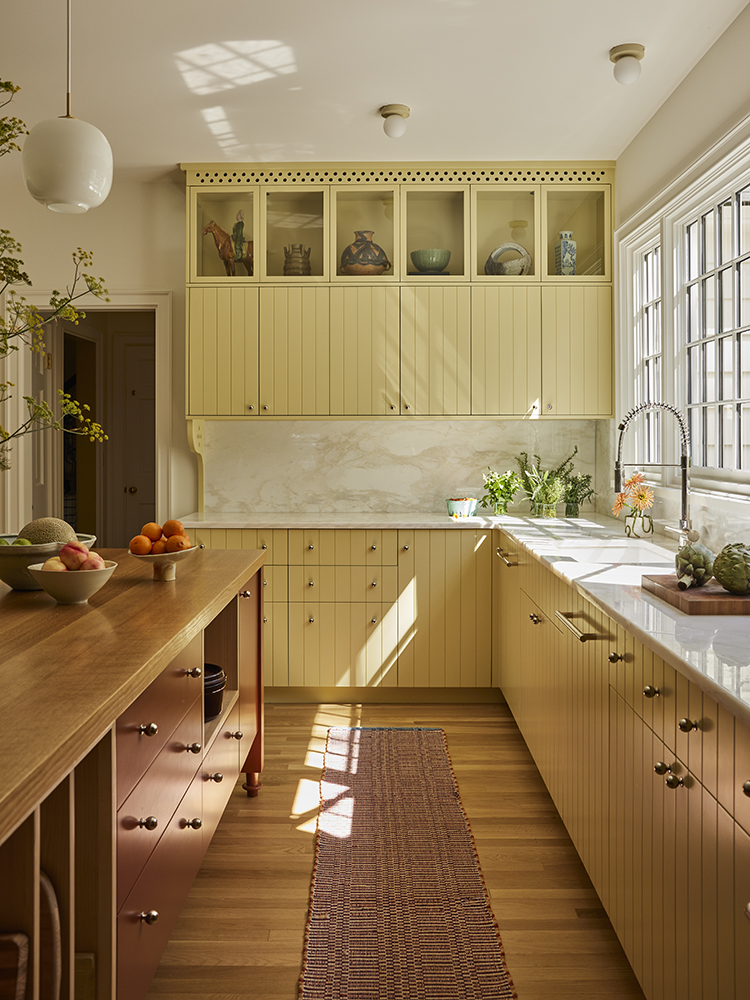
A green swinging door leads from the dining room into a kitchen painted a buttery yellow, a dialed-down version of the shade used in the front hallway. Merrill designed custom cabinetry with display cases for ceramics and hung a Vilhelm Lauritzen for Louis Poulsen VL 45 Radiohus pendant for a look that is both period correct and up-to-date. “The goal was to create something that would’ve looked modern in 1946,” she says.
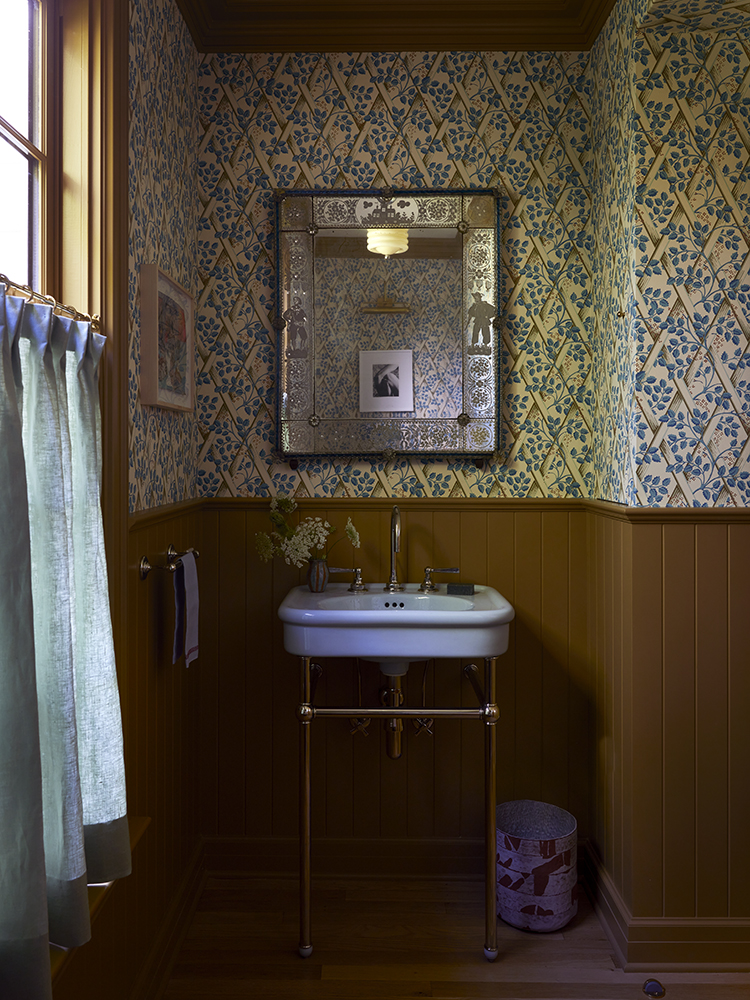
Upstairs, Merrill swapped the positions of the primary bedroom and its bath to allow the former to look out to a lovely meadow. She then brought this scenic landscape into the room with a Cole & Son wallpaper that coordinates with a patterned Turkish runner from 1stDibs.
She placed that rug between a window seat and a sleekly cozy De La Espada bed with a wraparound upholstered headboard. “It’s not a giant suite,” she observes, “but the florals and the view make it feel more expansive, an immersive botanical experience that is mesmerizing.”

For an equally mesmerizing project, a 1920s Tudor in the early movie-star colony of Los Feliz, California, Merrill channeled the jewel-toned opulence of Italian designer Renzo Mongiardino and the glamour of the silent film era, layering color and prints with masterful abandon.
The client, a vintage-fashion dealer who specializes in couture classics, had worked with Merrill on a previous home. During that project, they bonded over a shared love of fabrics, and for this new home, they embraced tailored furnishings with dressmaker details.
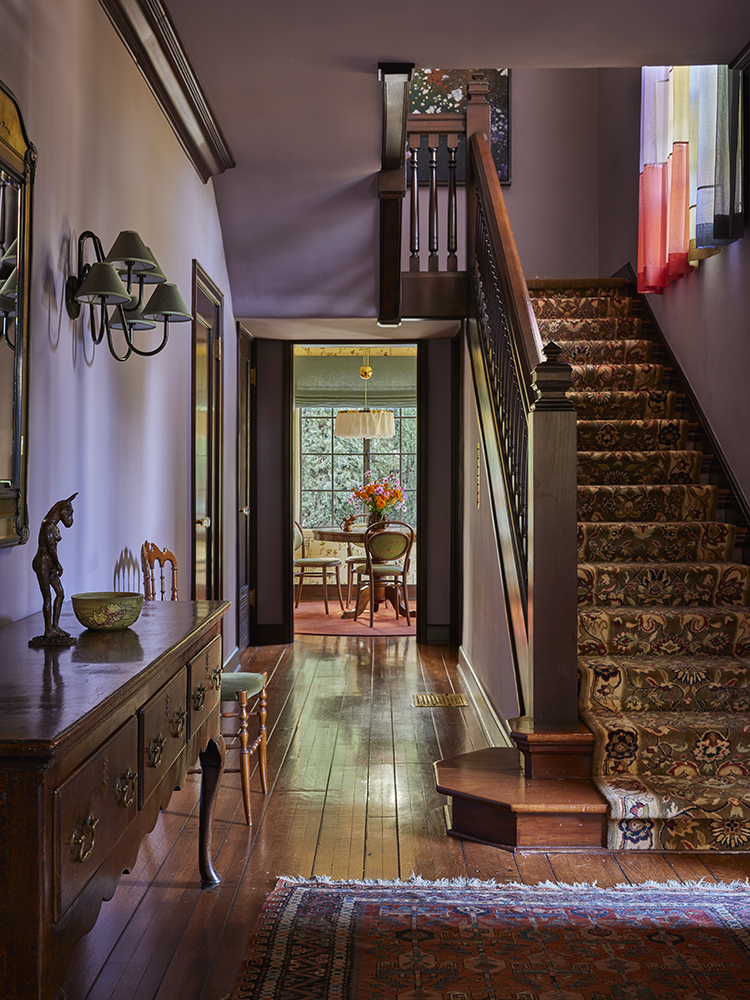
In the living room, for instance, Merrill honored the home’s period with a custom roll-arm sofa with plush piping and a fringe skirt, 1920s Italian club chairs with exposed bentwood arms and legs and Art Deco and Viennese pendant lights, mixing in a custom cloud table by Louise Liljencrantz, a 1960s H.W. Klein leather chaise and a 1940s leather-wrapped Swedish floor lamp, all set on a massive rug from India.
“Yes, it’s formal,” she says of the room, “but they entertain a lot, and we designed a window seat for their kids to sit on. It’s a room where you’re able to do your thing, and if there were a bunch of toy cars in the corner, they’d look great.”
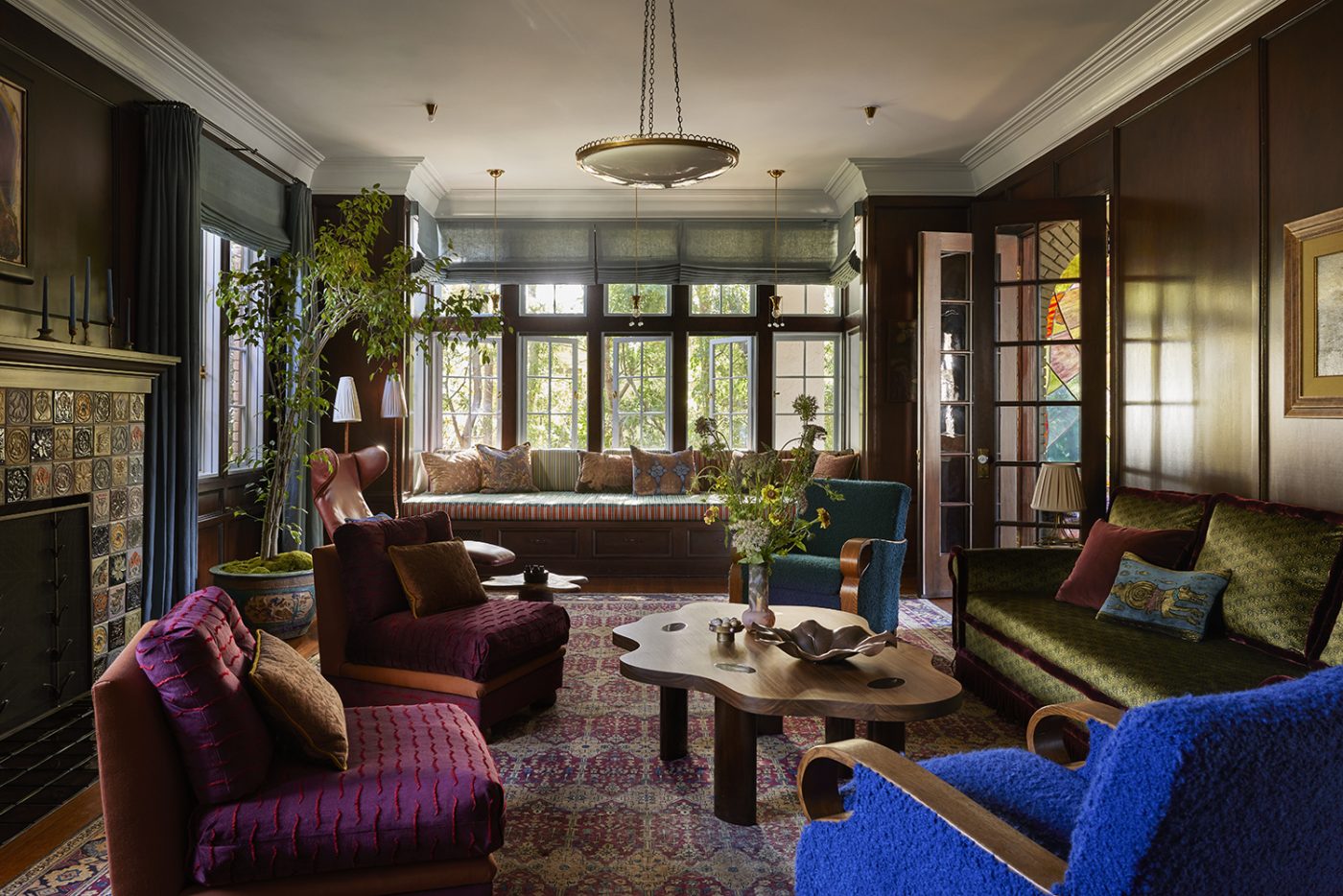
The pattern play continues in the wood-paneled den, where florals and checks combine in a bright counterpoint to the intricate design of a Doroksh rug. These are presided over by a ceiling painted with a Maxfield Parrish–esque sunlit cloudscape by the artist Louis Eisner. From the center of the room hangs a 1930s Swedish light made of silk and wires bent into the shape of leaves.
When selecting a color for the hallway between the living room and den, Merrill did not hold back. “I guess it’s kind of purple,” she admits. “I needed a color that would make sense. As much as we use color — and some people say we do it to a scary extent — I test a lot. At the office, I get made fun of for wishing there was another shade in the rainbow.”
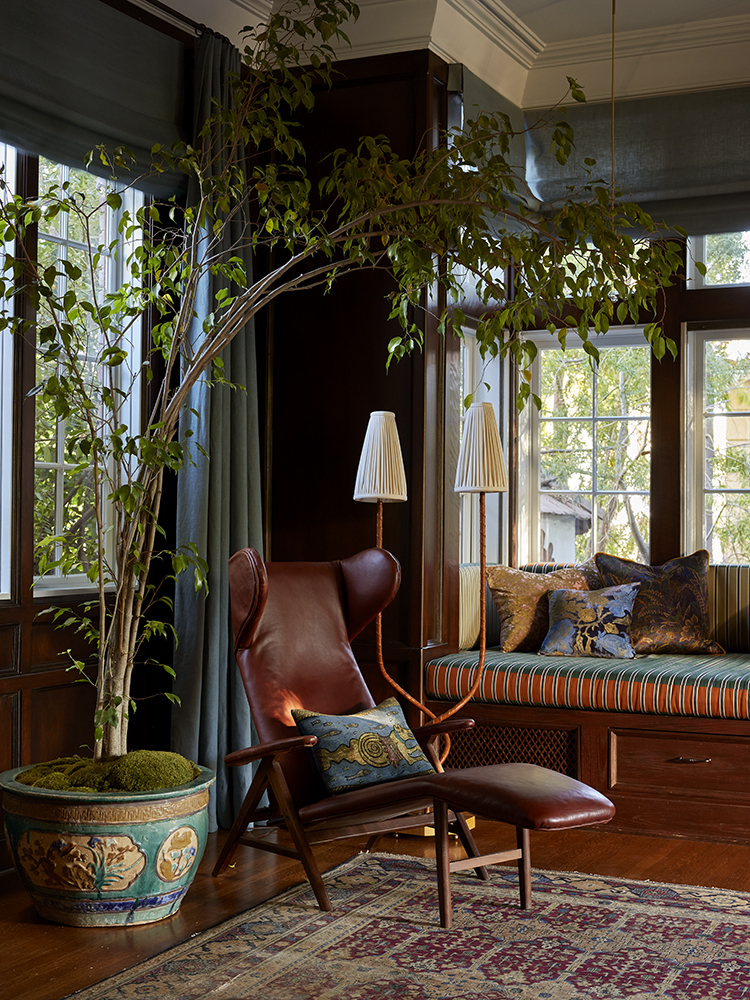
Merrill’s colorful career can be traced back to a childhood marked by beneficial influences. Her parents, who published beautiful reprints of classic books, were committed house flippers in New York’s Greenwich Village and New Jersey.
“Every seven years, they bought some falling-down house,” she remembers fondly. “Then, they’d get vintage things to put in them. I fit the stereotype of designers who were always changing the furniture in their childhood dollhouses, and whenever Mr. Rogers went to the Neighborhood of Make-Believe, I wanted to see inside the houses.”
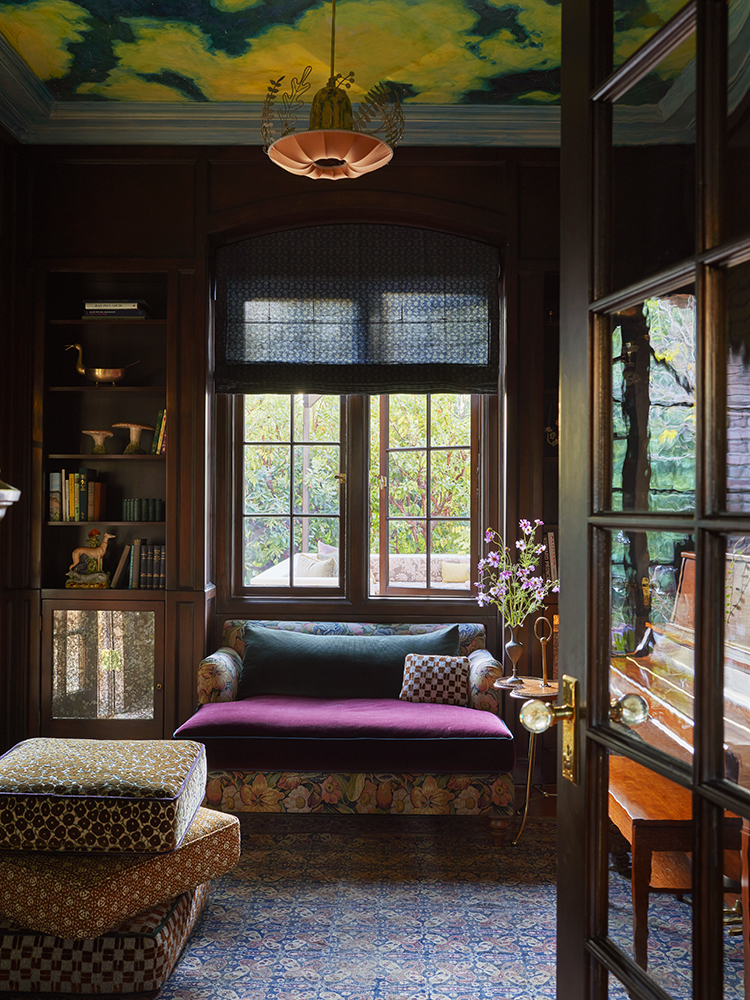
After earning a BA in English from Hartford, Connecticut’s Trinity College in 2000, she learned about textiles while doing an internship in Bangkok with her great uncle, the famed silk purveyor Jim Thompson. After the internship, she moved to Los Angeles, hoping to break into film production design or costuming but finding work in home decor and fashion retail instead. In 2006, she joined the then-fledgling studio Commune Design, where she worked on residential interiors and the Ace Hotel in Palm Springs.
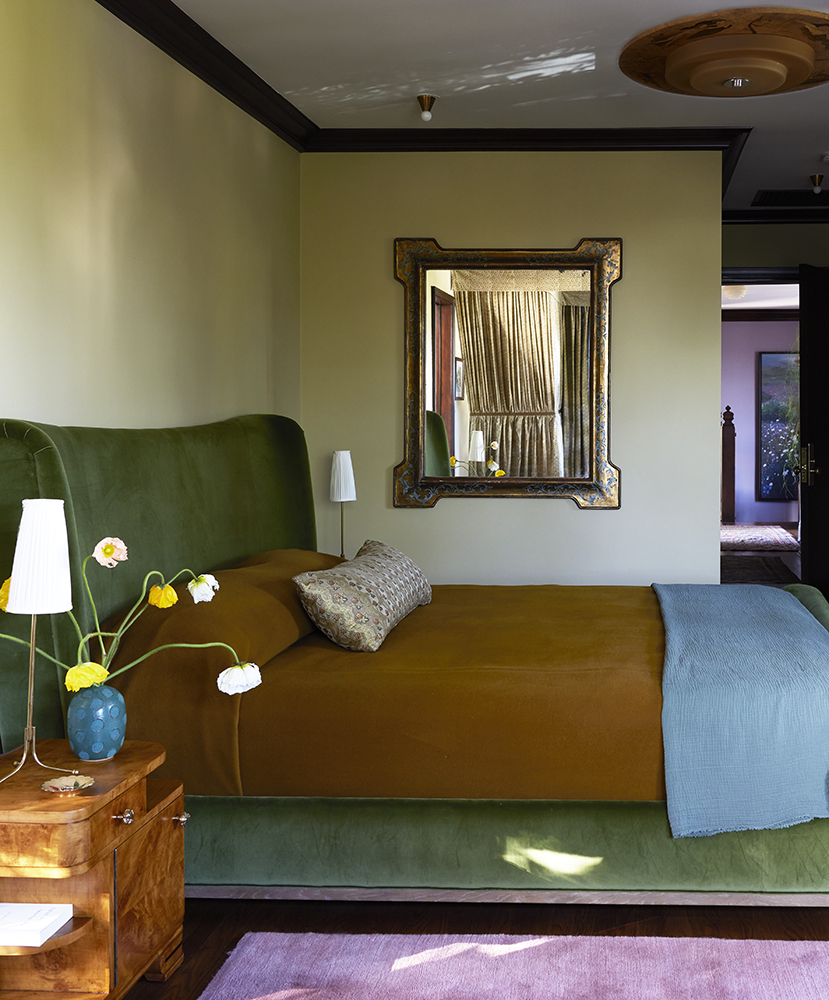
In 2009, following the birth of her daughter, Merrill single-handedly launched Reath in the carport of her house. She has since opened an office and her staff has grown to six, but she remains decidedly hands-on.
“I always had the fantasy of owning my own business before I even knew what it would be,” she says. “And back then, I liked the same things I like now: color and pattern and working with strong personalities and points of view. And I’ve gotten better at it.” She’s also learned how to set her own pace.
“I love doing the work but I tend to be an overthinker,” Merrill says with a smile, “And I do things slowly. I’ve been in my new house two years now, and all the art is still leaning on the floor, much to my husband’s chagrin.”

